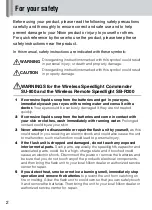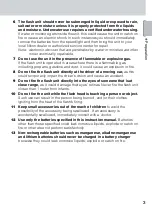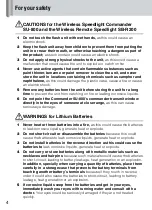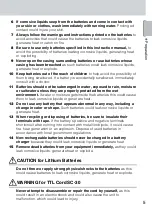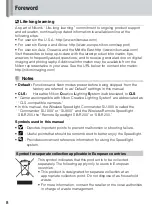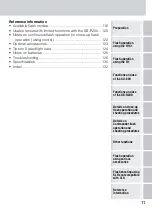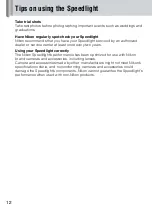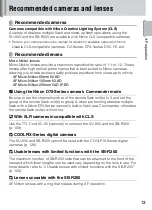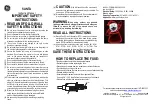
3
P
re
p
a
ra
tio
n
6
The flash unit should never be submerged in liquid or exposed to rain,
saltwater or moisture unless it is properly protected from the liquids
and moisture. Underwater use requires a certified underwater housing.
If water or moisture gets inside the unit, this could cause the unit to catch on
fire or cause an electric shock. In such instances you should immediately
remove the batteries from the speedlight and then bring the unit to your
local Nikon dealer or authorized service center for repair.
Note: electronic devices that are penetrated by water or moisture are often
not economically repairable.
7
Do not use the unit in the presence of flammable or explosive gas.
If the flash unit is operated in areas where there is a flammable gas,
including propane, gasoline and dust, it could cause an explosion or fire.
8
Do not fire the flash unit directly at the driver of a moving car,
as this
could temporarily impair the driver’s vision and cause an accident.
9
Do not fire the flash unit directly into the eyes of someone that is at
close range,
as it could damage their eyes’ retinas. Never fire the flash unit
closer than 1 meter from infants.
10
Do not fire the unit while the flash head is touching a person or object.
Such use can result in the person being burned, and/or their clothes
igniting from the heat of the flash’s firing.
11
Keep small accessories out of the reach of children
to avoid the
possibility of the accessory being swallowed. If an accessory is
accidentally swallowed, immediately consult with a doctor.
12
Use only the batteries specified in this instruction manual.
Batteries
other than those specified could leak corrosive liquids, explode or catch on
fire or otherwise not perform satisfactorily.
13
Non-rechargeable batteries such as manganese, alkaline-manganese
and lithium batteries should never be charged in a battery charger
because they could leak corrosive liquids, explode or catch on fire.
Summary of Contents for 4804 - SB R1 - Wireless Macro Flash System
Page 78: ...78 ...


